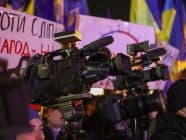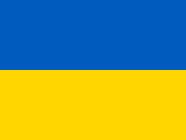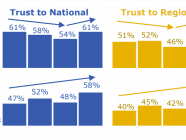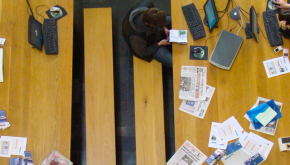On October 18, after a violent anti-migrant rally in Moscow’s Birulevo district, the radio station “Vesti FM,” part of All-Russia State Television and Radio Broadcasting Company (ВГТРК), launched the Migrant Moscow (Москва Мигрантская) project – an application designed to show the locations of large groups of allegedly illegal migrants on an interactive map.
The map could be updated not only by journalists but by anyone who downloaded the application and is interested in the topic. The app’s creators avoid mentioning the reliability of their sources and how, if at all, the information can be confirmed. Some of the information collected was labeled “according to radio listeners” while in other cases no source was indicated. One area was captioned simply as “potential working places for migrants.”
The project was an incendiary one: it was launched just a few days after the Birulevo riot, at a time when the attitude towards ‘foreigners’ in Russia was febrile and aggressive. At least two immigrants had been killed in Moscow in the days after the riot and the vice president of the Migrants Federation, a pro-migrant pressure group, was shot and wounded by an unknown woman near his apartment. In this climate, the Migrant Moscow project appeared to be taking the concept of user generated content and social media, and turning it into a weapon of racism.

Screenshots: The map when the project was announced (on the left) compared to the same map on October 23 (middle) and November 20 (right).
In November the project shut down after a group of activists started a petition demanding to close the “extremist project.” The authors of the petition argue that the project itself violated the criminal code by “kindling international and social hostility,” “humiliating human dignity,” and “calling for mass riots.”
But the site is still available and was updated again yesterday with information from the Federal Migration Service pointing out to new locations on the map.
The entire incident highlights the Russian media’s erratic, sometimes irresponsible attitude to race relations and crime.
Portrayal of Migration and Migrants in the Media
There is no direct evidence linking media coverage to the growing hostile attitude toward foreigners, but the rise of the nationalistic mood seems to go hand-in-hand with the skewed coverage of migrants and migration in the Russian media. Pro-government media often cite data from the Interior Ministry and claim it says that more than half of the crime, particularly in big cities, is committed by foreigners. In fact, the official website of the Ministry says less than three percent of the total 1.3 million crimes have been committed by foreign citizens or stateless people in 2013.
The Head of the Federal Migration Service of the Rostov Oblast Viktor Solodovnikov said in an interview to Ytro.ru that confusion often arises as a result of misunderstanding the term “migration” itself, which includes internal migration within Russian Federation. But whether it is simple ignorance or deliberate distortion of facts, the tone in the media is becoming increasingly hostile towards certain groups of international migrants. The nationality of a suspect or convicted criminal is often revealed in the headline of a story if they are from Central Asian or the Caucasus. The same does not apply when the reported crime is committed by a Russian, Ukrainian, or other more ‘slavic-looking’ national.
A 2007 study of media coverage of migrants by Tatyana Skrebtsova, a researcher at Saint-Petersburg State University, shows that the image of a labor migrant in Russia is mostly negative, depersonalized, and usually only refers to migrants from Caucasus and Central Asia, while the more Slavic looking Ukrainians and Moldavians are not subjected to negative stereotypes.
The most commonly used stereotypes, according to Skrebtsova, are mainly people of Caucasian or Central Asian region with unpleasant physical appearances who are infected with dangerous diseases, speak little or no Russian, create social problems for Russian citizens, and damage the economy of Russia by sending money to their home countries. Skrebtsova points out that the content is semantically very similar to the components of racist ideology described by Teun A. van Dijk in 1989.
Skrebtsova writes that media coverage of migrants is becoming more emotional over time. The language used by the media often uses terms such as “crowds of drug dealers,” “occupants,” “bringing death and destruction to Russia,” “destroying the local population.” Migrants are more often than ever described using such adjectives as legal/illegal, wanted/unwanted, good/bad, useful/useless/harmful.
Journalists in traditional media are pressurized by their news organisations to write according to these stereotypes, whether they believe in them or not, leading Skrebtsova to conclude that agenda setters in Russia are deliberately presenting the issue of labour migration in Russiain a value-laden, emotional manner, instead of looking at the case through the prism of law and reason.
Source used in this article: Tatyana Skrebtsova (2007) “Image of a Migrant in Contemporary Russian Media” (Образ Мигранта в Современных Российских СМИ) in Political Linguistics (Политическая Лингвистика),3/23, Ekaterinburg, p.p. 115-118
Tags: media coverage of migrants, migration, migration in Russia, Russia, Russian Federation, Russian Media, state controlled media, xenophobia, xenophobia in media












































